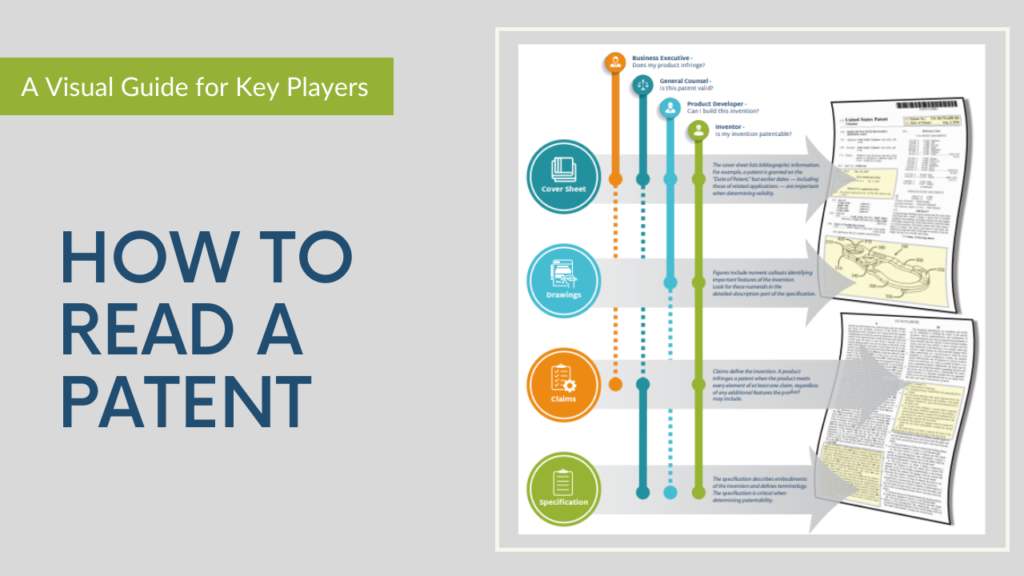How to Read a Patent: A Visual Guide for Innovation Stakeholders
May 3rd, 2021 by Dilworth IP | Recent News & Articles |

Patents can seem like complex, confusing documents reserved only for intellectual property lawyers. But fear not! With a little guidance, anyone can understand the basics of how to read a patent. This article equips you with the tools to uncover valuable information within a patent based on your role.
Executives, attorneys, developers, and inventors play important but different roles in the innovation process. So when these stakeholders read a patent, they can save time and increase effectiveness by focusing on parts of the patent that are most relevant to their respective role. This infographic depicts four primary parts of a patent—cover sheet, drawings, claims, and specification—and identifies how each part is important to each stakeholder.
How To Read A Patent Document Based On Your Role
Business Executive
Intellectual property has become the cornerstone of many successful companies. An executive should be able to recognize and mitigate the likelihood of infringing a competitor’s patent.
Business executives can focus on the claims.
Claims define the invention. A product infringes a patent when the product meets every element of at least one claim, regardless of any additional features the product may include.
General Counsel
Successful companies can become targets for patent litigation. An attorney should be aware of ways that a patent can be invalidated.
General general counsel can focus on the cover sheet.
The cover sheet lists bibliographic information. For example, a patent is granted on the “Date of Patent,” but earlier dates — including those of related applications — are important when determining validity.
Product Developer
With today’s remote workforce it is not always possible for R&D and product development teams to sit together. A product developer should be able to extract important technical details from a patent.
Product developers should focus on the drawings.
Figures/drawings include numeric callouts identifying important features of the invention. Look for these numerals in the detailed-description part of the specification.
Inventor
Patents can only be granted for “new” inventions. An inventor should understand how to determine whether his invention has already been patented by someone else. —Focus on the specification.
Inventors can focus on the specification.
The specification describes embodiments of the invention and defines terminology. The specification is critical when determining patentability.
Use this link to view and download the infographic:
Image credits: Photo by WayHomeStudio on Freepik.
This article is for informational purposes, is not intended to constitute legal advice, and may be considered advertising under applicable state laws. The opinions expressed in this article are those of the author only and are not necessarily shared by Dilworth IP, its other attorneys, agents, or staff, or its clients.


